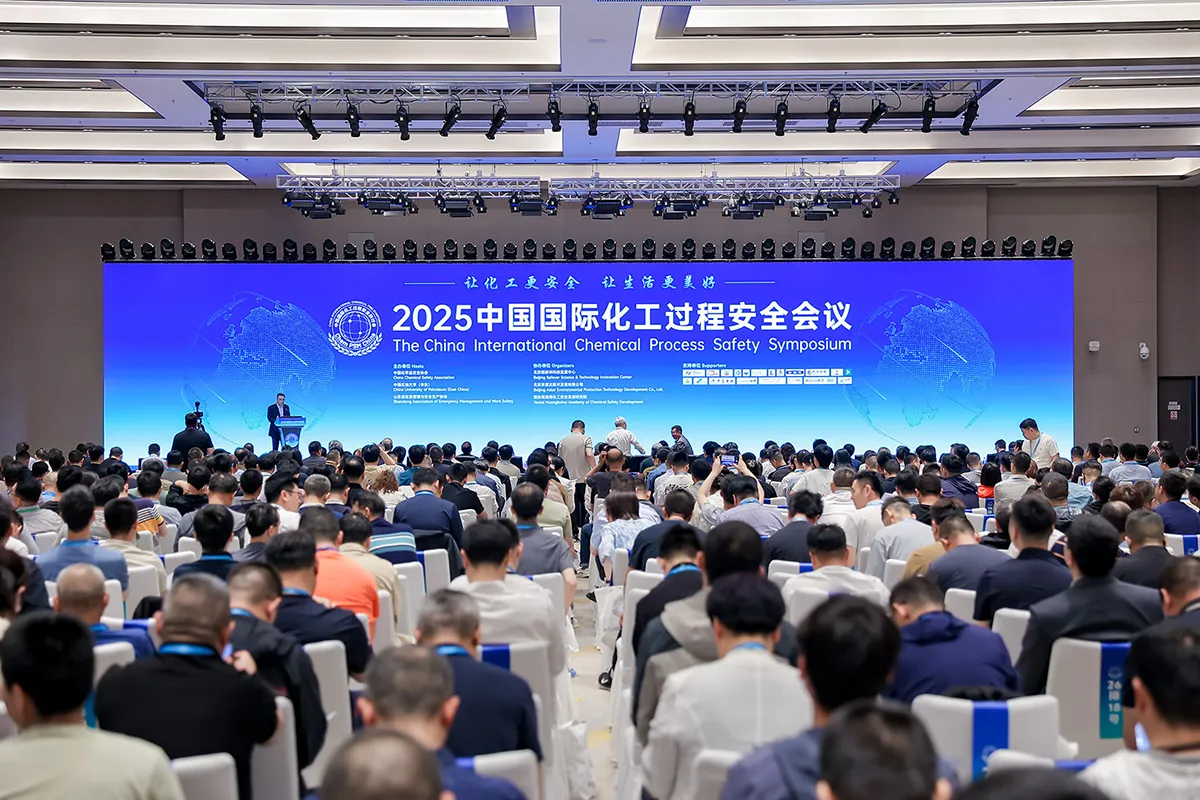The 6th China International Chemical Process Safety Symposium Opened in Yantai
On May 28th, the 6th China International Chemical Process Safety Symposium kicked off at Yantai Bay International Convention and Exhibition Center. This conference, themed "Safer chemistry, Better living" featured keynote speeches by 16 Chinese and foreign experts and scholars. They shared new concepts, technologies, and achievements in chemical process safety management from domestic and international perspectives. The aim was to further promote the application of chemical process safety management in a broader scope, more fields, and at a higher level, enhance the inherent safety level, and promote the benign interaction between high-quality development and high-level safety.

The conference noted that chemical process safety management is an advanced international approach for effectively preventing major safety risks associated with hazardous chemicals. China has been implementing this management concept for decades and released the industry standard Guidelines for Chemical Process Safety Management in 2022, which includes 20 management elements. An increasing number of chemical enterprises have accepted and enriched the concept of "process safety" in practice. However, there are still issues in the implementation of process safety management in China's chemical industry, such as the lack of systematic consideration in relevant laws and standards, the absence of risk-based planning and implementation of specific management activities, mismatches between enterprise job settings and process safety management, unclear allocation of safety management responsibilities among various professional departments, weak capabilities of required professional personnel, and the lack of an effective assessment mechanism.
The conference believes that through government-led promotion, active improvement by enterprises, and technical support from associations and groups, the vision of chemical process safety can be realized. As the main body of production safety, enterprises should focus on the hazardous characteristics of chemicals to prevent runaway chemical reactions; strengthen anti-corrosion management to prevent chemical leaks; strictly conduct process hazard analysis and dynamically update risk assessments in real time to ensure the effectiveness of Independent Protection Layers (IPL); standardize Standard Operating Procedures (SOP) and enhance the management of Permit to Work (PTW) systems; and strictly control personnel entry, systematically conduct training, and improve employees' job competencies.
During the conference, five specialized training sessions were held on process safety management, empowerment of functional safety engineers, risk-based equipment integrity management, safety management of energy and chemical enterprises, and risk analysis and control. Additionally, an exhibition on safety technology and emergency equipment for hazardous chemicals was organized, showcasing a batch of innovative solutions for intelligent, information-based, and unmanned technologies that empower the safe production and emergency rescue of hazardous chemicals. The conference also held six sub-forums, where more than 70 experts and scholars conducted special exchanges on themes including major safety risk prevention and control, construction of process safety management systems, chemical inherent safety technologies, safety emergency digital intelligent equipment, and AI+chemical process safety.
It is reported that after more than a decade of efforts, the China International Chemical Process Safety Symposium has become the largest, most comprehensive, and most influential international conference in China's chemical safety field in terms of participants, theme coverage, and professional impact. This conference was co-organized by the China Chemical Safety Association, China University of Petroleum (East China), and the Shandong Emergency Management and Safety Production Association. Participants included representatives from emergency management departments, chemical enterprises, scientific research institutions, consulting service organizations, and experts and scholars from the United States, France, Germany, the Netherlands, Norway, Japan, and other countries.